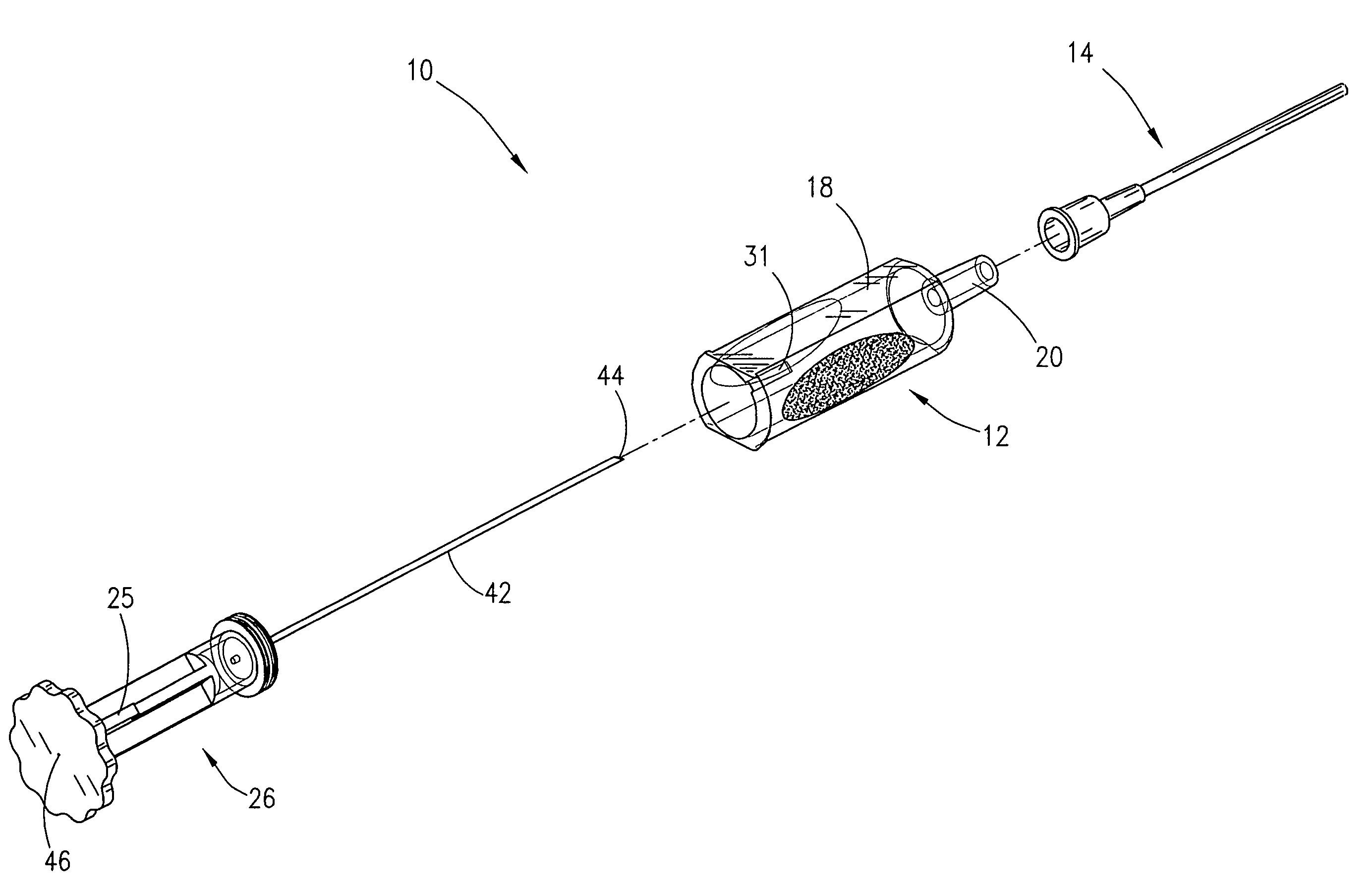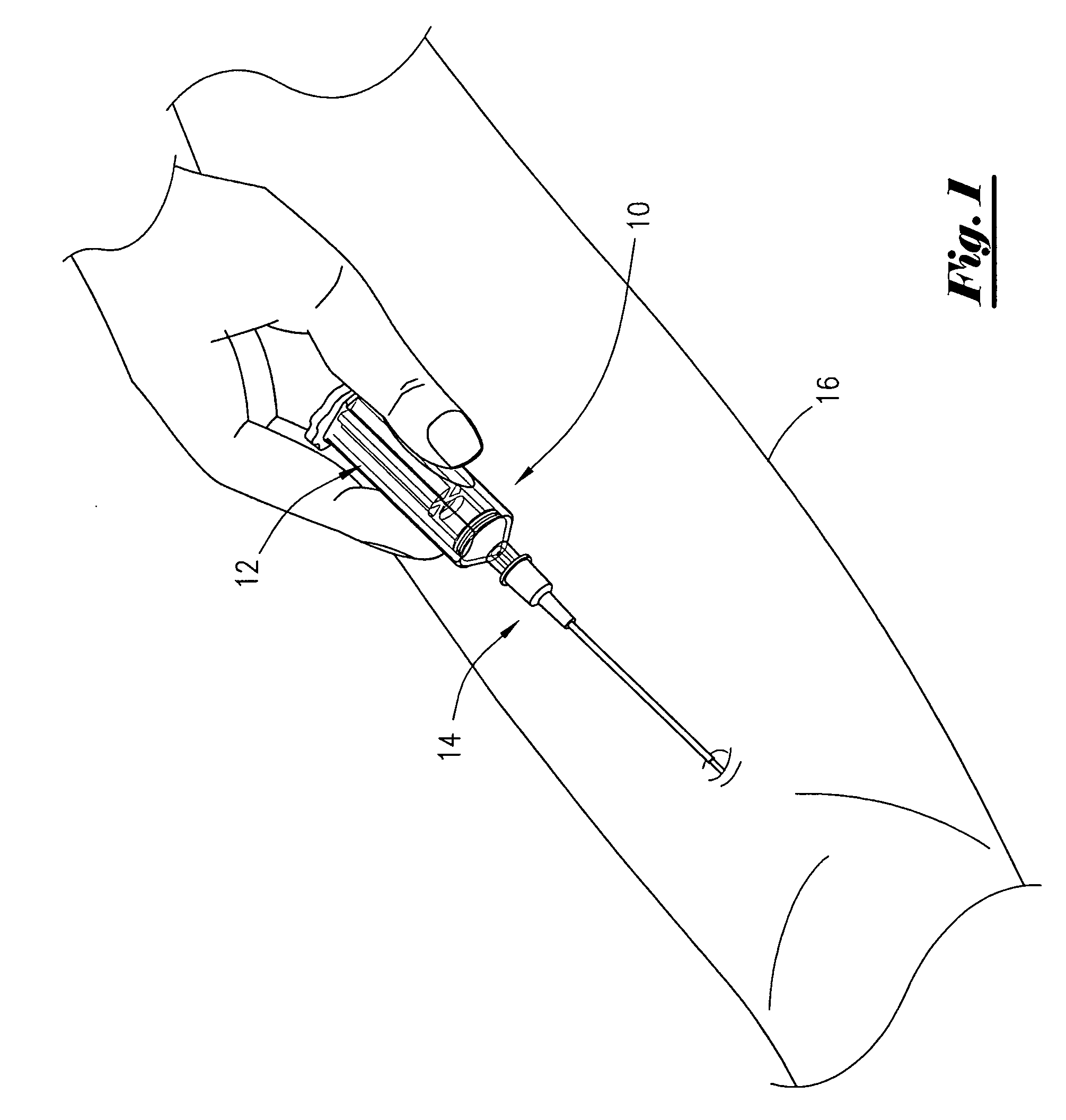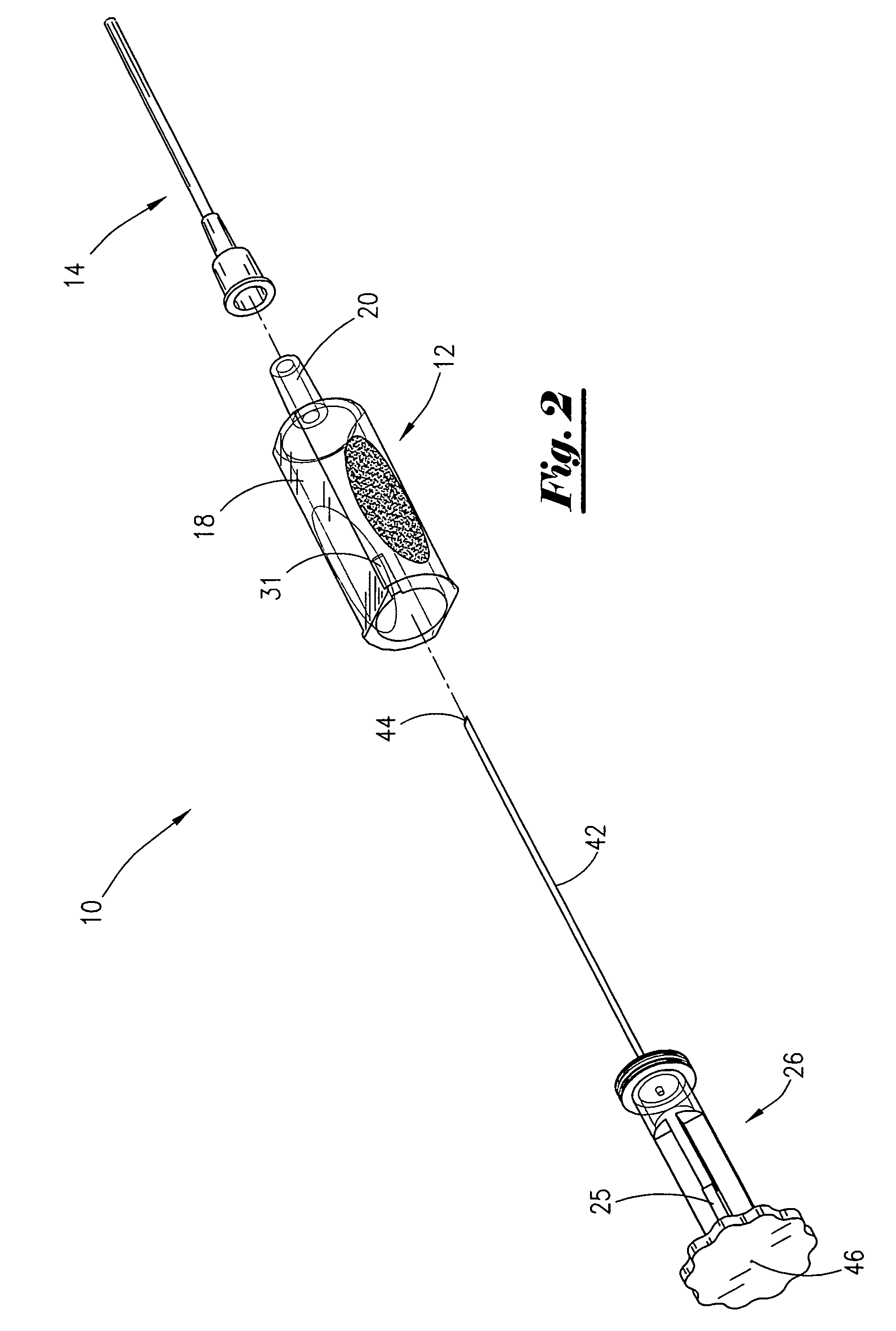Method and apparatus for introducing an intravenous catheter
a technology of intravenous catheter and catheter inserting device, which is applied in the direction of intravenous devices, medical syringes, intravenous syringes, etc., can solve the problems of difficult piercing, difficult to pierce, and difficulty in introducing the cannula
- Summary
- Abstract
- Description
- Claims
- Application Information
AI Technical Summary
Benefits of technology
Problems solved by technology
Method used
Image
Examples
Embodiment Construction
[0026]As shown in FIG. 1, a practitioner is using a new catheter insertion apparatus 10 to insert the catheter assembly 14 into a patient's arm 16. The insertion assembly 12, in addition to the catheter assembly 14, includes a transparent sleeve 18 and plunger assembly 26 as shown in FIG. 2. As further seen in FIG. 3, the transparent sleeve 18 is a transparent elongated tubular member open at each end with a nipple portion 20 at one end. The nipple portion 20 is tapered to fit within the hub member 54 of the catheter assembly 14 to which the cannula 52 is attached, therefore practically any catheter of the proper size and length made for use with a syringe may be used with the new insertion assembly 12.
[0027]As further seen in FIG. 3 and FIG. 4, the exterior of the transparent tubular transparent sleeve 18 includes flat areas 22 on both upper and lower sides as well as concaved shaped sides 24 provided with embossing to assist in gripping the transparent sleeve 18 using only the pra...
PUM
 Login to View More
Login to View More Abstract
Description
Claims
Application Information
 Login to View More
Login to View More - R&D
- Intellectual Property
- Life Sciences
- Materials
- Tech Scout
- Unparalleled Data Quality
- Higher Quality Content
- 60% Fewer Hallucinations
Browse by: Latest US Patents, China's latest patents, Technical Efficacy Thesaurus, Application Domain, Technology Topic, Popular Technical Reports.
© 2025 PatSnap. All rights reserved.Legal|Privacy policy|Modern Slavery Act Transparency Statement|Sitemap|About US| Contact US: help@patsnap.com



